Table of Contents
Ever found yourself in the middle of cooking, only to realize you're completely out of sour cream? It's a kitchen crisis we've all faced. That tangy, creamy goodness is a staple in so many recipes, from fluffy cakes to zesty dips. But don't panic! This article is your guide to the best sour cream substitutes, ensuring your culinary creations aren't derailed. We'll explore a range of options, from the familiar tang of Greek yogurt to the surprising versatility of mayonnaise. Whether you're baking, whipping up a dip, or trying to make a creamy sauce, we've got you covered. This article will show you exactly what can you substitute sour cream for, and we'll break down each alternative, discussing its flavor, texture, and how to use it effectively. Get ready to unlock the secrets to sour cream swaps and become a kitchen ninja, never again held hostage by an empty container.
Greek Yogurt: The Tangy Twin
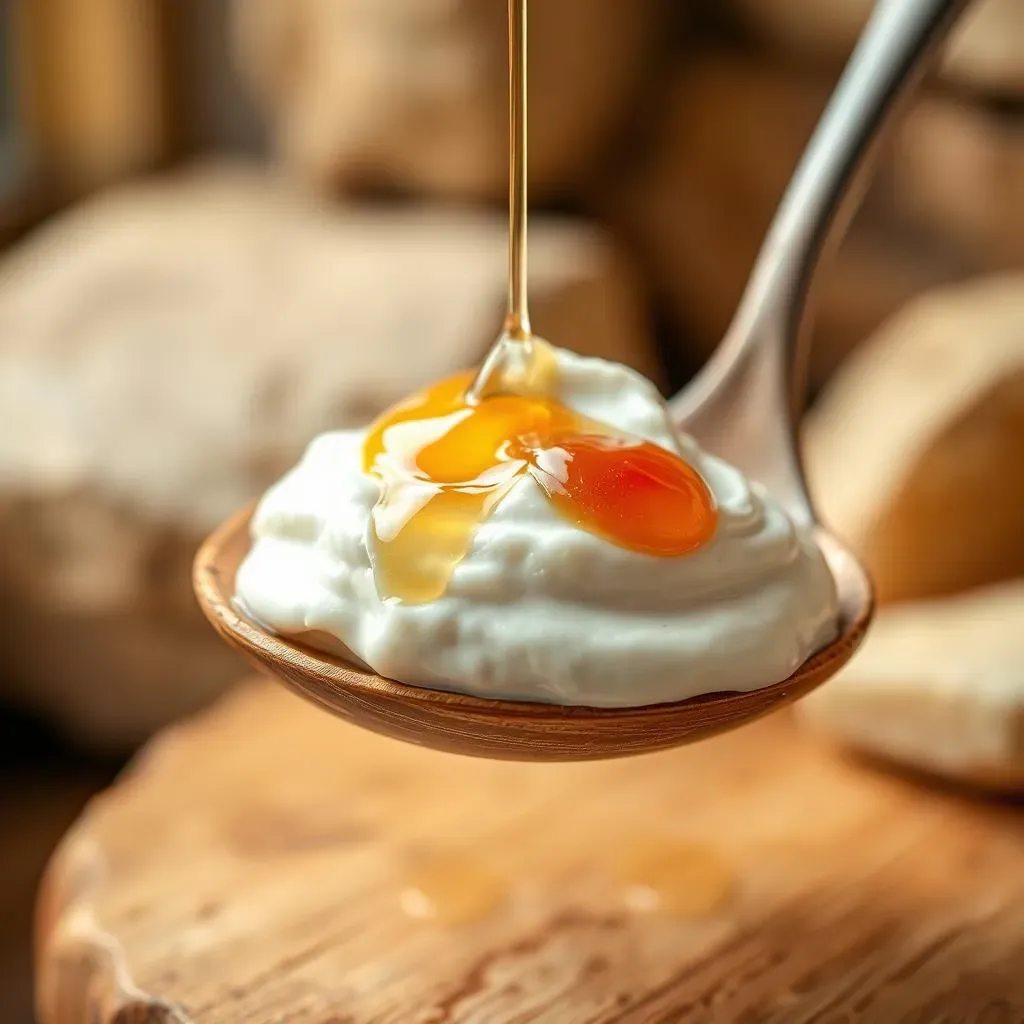
Greek Yogurt: The Tangy Twin
The Perfect Match
Okay, so you're staring into the fridge, sour cream MIA, right? Don't sweat it. Greek yogurt is your absolute best friend here. Seriously, it's like sour cream's cooler, more health-conscious cousin. They share that lovely tang and creamy texture, which is why it works so well as a swap. I've used it in everything, from tacos to my famous (well, in my kitchen) lemon poppyseed muffins, and no one even notices the difference. The key is to go for plain, full-fat Greek yogurt. The fat content is important to mimic the richness of sour cream. Low-fat versions can work, but you might lose some of that luxurious mouthfeel, and nobody wants a sad, watery dip.
How to Use It
Using Greek yogurt as a substitute is super easy. It’s a 1:1 swap, meaning if your recipe calls for one cup of sour cream, use one cup of Greek yogurt. If you need that extra bit of tang, you can add a squeeze of lemon juice. I usually do this when I'm making dips or sauces. It's like adding a little extra zing that makes all the difference. Just remember, if you're baking with it, be sure to choose a yogurt without any weird additives like gums or starches, because those can mess with the recipe. I learned this the hard way when my cake ended up a bit gummy – lesson learned!
Use | Greek Yogurt | Sour Cream |
|---|---|---|
Dips | Excellent | Excellent |
Baking | Good | Excellent |
Sauces | Excellent | Excellent |
A Healthier Choice
Here's the kicker: Greek yogurt is actually better for you than sour cream. It's packed with protein, which is great for keeping you full and energized. Plus, it tends to be lower in fat and calories. So, not only are you solving your sour cream dilemma, but you're also making a healthier choice. It's a win-win! I love using it as a topping for my baked potatoes instead of sour cream – it’s lighter, but I still get that cool, tangy kick. Trust me, once you start using Greek yogurt as a sour cream substitute, you might just never go back.
Cream Cheese: When Richness is Key

Cream Cheese: When Richness is Key
Okay, so Greek yogurt is great, but what if you need something a little more...decadent? That’s where cream cheese steps in. It’s not a perfect match for sour cream in terms of tang, but it absolutely nails that rich, creamy texture. Think of it like this: if Greek yogurt is the cool cousin, cream cheese is the indulgent aunt who always brings the good stuff. I’ve found this swap works wonders in recipes where you want that extra bit of luxuriousness. For example, using cream cheese in a cheesecake instead of sour cream makes it ultra-rich. Just be aware, it's not a straight 1:1 swap like yogurt; it needs a little finesse.
The trick with cream cheese is to soften it first. You don’t want to be dealing with hard chunks in your batter or dip. Let it sit at room temperature for a bit, or give it a quick zap in the microwave. Then, you'll need to thin it out with a bit of liquid. Milk or water works well. I usually start with a tablespoon at a time, mixing until it reaches a consistency that’s similar to sour cream. This step is crucial, so don’t skip it! Once it’s thinned, you can use it in dips, sauces, or even as a topping. I’ve used it in a pinch for my enchilada sauce, and it added this incredible depth of flavor. Just keep in mind, you might need to add a dash of lemon juice or vinegar to get that signature sour cream tang.
Use | Cream Cheese | Sour Cream |
|---|---|---|
Dips | Good (with adjustments) | Excellent |
Baking | Excellent (for richness) | Good |
Sauces | Good (with adjustments) | Excellent |
DIY Sour Cream: A Simple Recipe
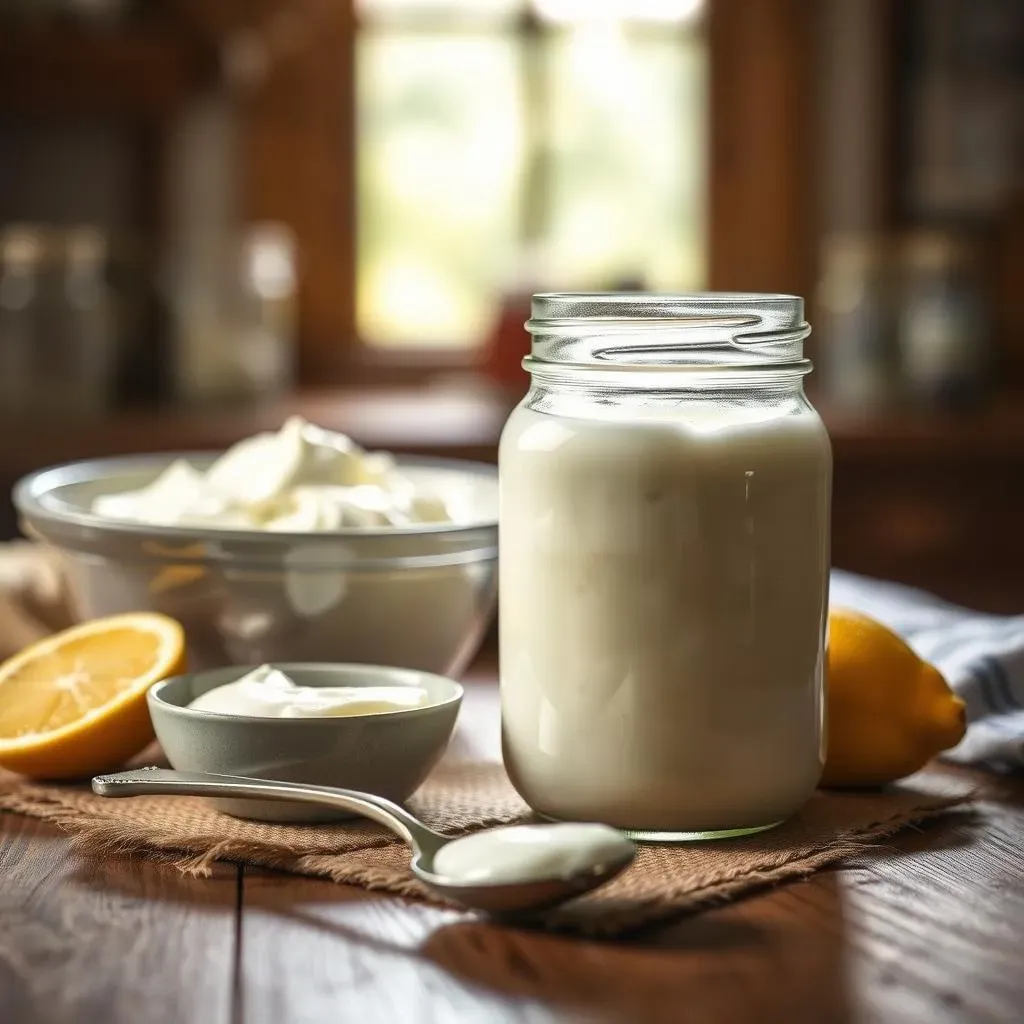
DIY Sour Cream: A Simple Recipe
The Magic of Homemade
Okay, so you're feeling a bit adventurous, huh? Maybe you're thinking, "Why buy it when I can make it?" I get it. Making your own sour cream is surprisingly easy and kind of fun. It's like a mini science experiment in your kitchen, and the best part is, you get a tasty result! Plus, you control exactly what goes into it, which is a big win for anyone who's watching ingredients. It's also a great option if you're in a pinch and can't make it to the store. I remember one time, I was making a big batch of chili and realized I had no sour cream. DIY to the rescue!
The Recipe
Here's the deal: you need two ingredients – heavy cream and an acid, like lemon juice or vinegar. That’s it! Mix one cup of heavy cream with one tablespoon of lemon juice or white vinegar in a clean jar. Stir it up, cover it loosely, and let it sit at room temperature for 24 to 48 hours, or until it thickens to your liking. The longer it sits, the tangier it gets. It’s like magic! Once it's thickened, give it a good stir and pop it in the fridge. It'll keep for about a week. I've found that using a glass jar works best, because it’s easy to see when it's thickened. I usually make a big batch on Sundays so I have it for the week. It's so satisfying to make my own!
Ingredient | Amount | Purpose |
|---|---|---|
Heavy Cream | 1 cup | Base for the sour cream |
Lemon Juice or White Vinegar | 1 tablespoon | Provides the acidity for fermentation |
Other Dairy Delights: Buttermilk, Kefir, & Crème Fraîche

Other Dairy Delights: Buttermilk, Kefir, & Crème Fraîche
Buttermilk: The Tangy Liquid
Alright, let's talk about buttermilk. It’s not just for pancakes, you know! Buttermilk is that slightly sour, slightly thick liquid that's left over after making butter. It has a lovely tang that can mimic sour cream, especially in baking. Now, it's not as thick as sour cream, so you can't use it as a direct swap in every recipe. But, for things like cakes, muffins, or even salad dressings, it can add a beautiful depth of flavor. I've used it in my cornbread recipe, and it makes it so moist and flavorful. Just keep in mind that it’s thinner, so it might not work well as a topping unless you're okay with a bit of runniness.
Kefir: The Probiotic Powerhouse
Next up, kefir! This one’s a bit of a wild card, but hear me out. Kefir is a fermented milk drink that’s packed with probiotics. It’s similar to yogurt, but it's thinner and has a more pronounced sour flavor. I find it to be a decent substitute for sour cream in sauces and dressings, especially if you're looking for a healthier option. It adds a nice tang and a bit of a creamy texture, but it's not as thick as sour cream. It’s a great way to sneak in some probiotics while you're at it! I use it in my morning smoothies too, but I've also used it in a creamy cucumber salad dressing. It gives it this unique zesty flavor.
Dairy Option | Texture | Flavor | Best Uses |
|---|---|---|---|
Buttermilk | Thin | Tangy | Baking, Salad Dressings |
Kefir | Thin | Sour | Sauces, Dressings, Smoothies |
Crème Fraîche | Thick | Rich, Slightly Tangy | Toppings, Sauces, Baking |
Crème Fraîche: The Luxurious Choice
Lastly, let's talk about crème fraîche. This is like the fancy French cousin of sour cream. It's richer, thicker, and has a slightly tangy flavor. It’s made from heavy cream that’s been cultured, so it has a higher fat content than sour cream. Because of its richness, it’s a great substitute for sour cream in dishes where you want that extra bit of indulgence. Think creamy sauces, decadent toppings, or even in baked goods for a richer flavor. I've used it in my potato gratin, and it made it incredibly creamy and delicious. If you're not worried about the extra fat, crème fraîche is a fantastic option. It’s a bit more expensive, but sometimes, it’s worth the splurge!
Mayonnaise: The Unexpected StandIn
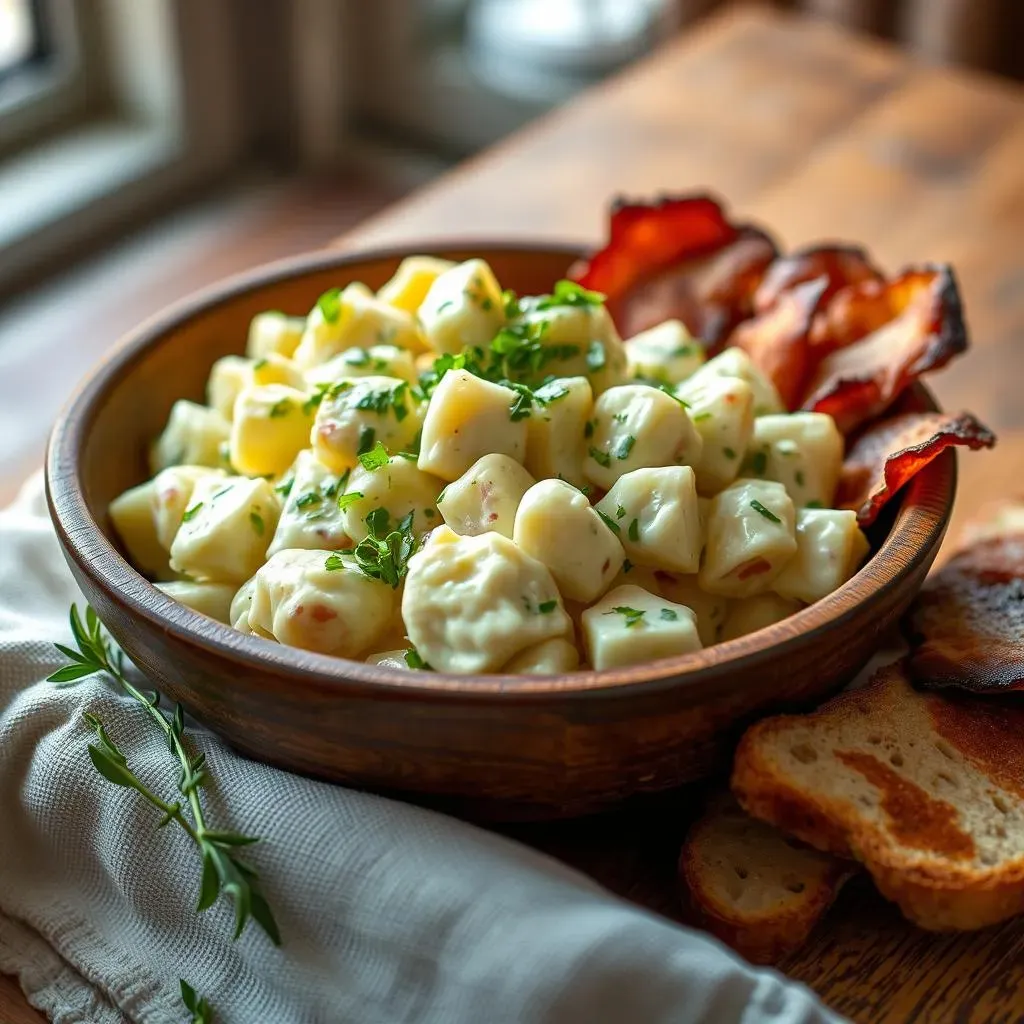
Mayonnaise: The Unexpected StandIn
The Secret Weapon
Okay, I know what you're thinking: mayonnaise? As a sour cream substitute? It sounds weird, I get it. But trust me on this one. Mayonnaise is basically an emulsion of oil, egg yolks, and an acid like vinegar or lemon juice. It has a creamy texture and a slight tang, making it a surprisingly good stand-in for sour cream in a pinch. I was skeptical too, until I tried it in a potato salad recipe when I was out of sour cream. It worked like a charm! The key is to use it in recipes where you need that creamy texture, and where a little extra richness won't hurt.
How to Make it Work
The best part about using mayonnaise is that it’s a straight 1:1 swap. If your recipe calls for a cup of sour cream, use a cup of mayonnaise. Simple as that! It works well in dips, sauces, and even some baking recipes. I wouldn't use it in something like a cheesecake, where you really need that tangy flavor, but for things like creamy pasta sauces or potato salads, it’s a lifesaver. Just keep in mind that mayonnaise is richer than sour cream, so your dish might turn out slightly heavier. If you’re worried about that, you could try mixing it with a little bit of Greek yogurt or buttermilk to lighten it up. But honestly, sometimes that extra richness is exactly what you need! I even use it on my tacos sometimes when I am out of sour cream, it's a little different but still delicious.
Use | Mayonnaise | Sour Cream |
|---|---|---|
Dips | Good | Excellent |
Baking | Okay (for moisture) | Good |
Sauces | Good | Excellent |
Cottage Cheese: A ProteinPacked Option
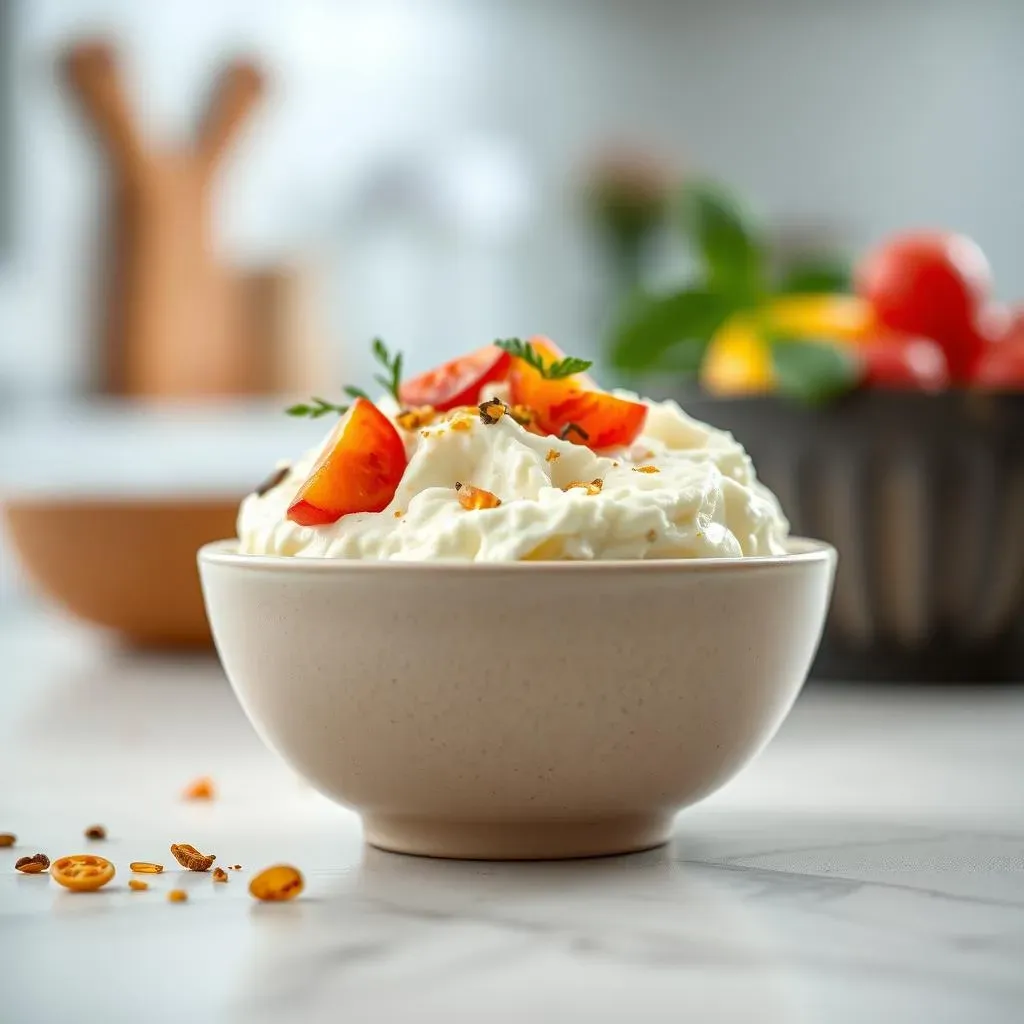
Cottage Cheese: A ProteinPacked Option
Alright, let’s talk about cottage cheese. Now, I know what you might be thinking: "Cottage cheese? Really?" But hear me out! This stuff is seriously underrated as a sour cream substitute, especially if you're looking to pack in some protein. I mean, we’re talking about a cheese that’s basically a protein bomb, and it can actually work surprisingly well in place of sour cream. It’s not a perfect match in terms of flavor, but it brings a creamy texture and can be used in a lot of the same ways. I’ve been using it more and more lately, especially when I'm trying to eat healthier. It's a great way to add some creaminess without all the fat and calories of sour cream. I even used it in a dip recently, and my friends were shocked when I told them what it was.
Use | Cottage Cheese | Sour Cream |
|---|---|---|
Dips | Good (blended) | Excellent |
Baking | Okay (with adjustments) | Good |
Sauces | Good (blended) | Excellent |
The key to using cottage cheese as a sour cream substitute is to blend it. If you just throw it in as is, you’ll end up with a lumpy mess, and no one wants that. Use a food processor or blender to whip it until it's completely smooth and creamy. This will give you a texture that’s much closer to sour cream. Once blended, you can use it in dips, sauces, or even as a topping. I’ve found it works great in things like mashed potatoes or as a topping for tacos. It adds a nice creaminess and a subtle tang. If you want to mimic the sour cream flavor more closely, add a dash of lemon juice or vinegar. I usually start with a teaspoon and add more to taste. It's all about experimenting to see what works best for your recipe! And hey, you're getting a protein boost while you're at it – bonus!
Coconut Milk: The Vegan Solution
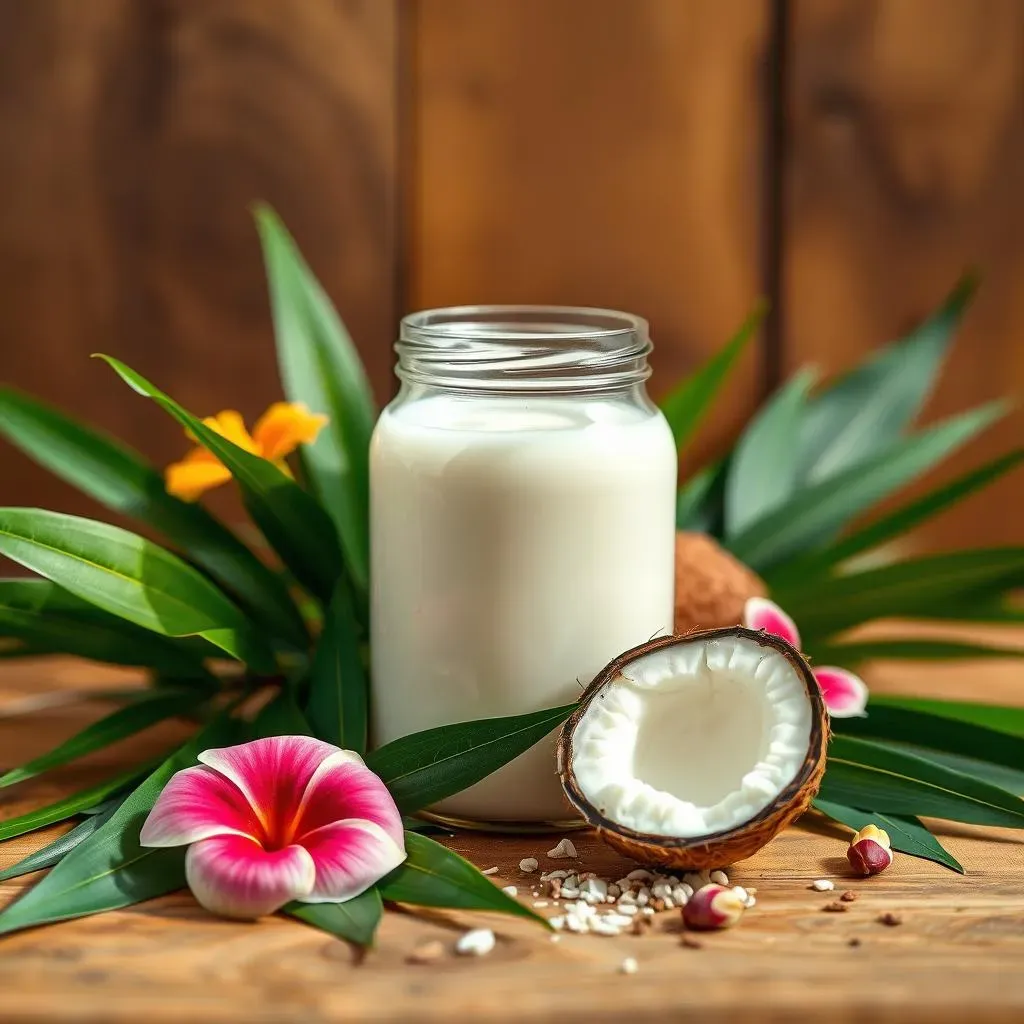
Coconut Milk: The Vegan Solution
The Creamy Alternative
Okay, so let's talk about coconut milk – the superhero of the vegan world when it comes to sour cream substitutes. It’s a fantastic option for anyone who's dairy-free or just looking for a plant-based alternative. Now, we're not talking about the watery stuff you find in a carton. We're talking about the thick, creamy part of full-fat coconut milk that you get from a can. It's this richness that makes it a great swap for sour cream. I remember when I first tried using it, I was amazed at how well it worked. It gave my vegan chili the perfect creamy texture I was looking for.
How to Use Coconut Cream
The key here is to chill a can of full-fat coconut milk in the fridge overnight. This causes the thick cream to separate from the watery liquid. When you open the can, carefully scoop out the thick cream from the top. This is what you'll use as your sour cream substitute. It's thick and luscious, but it doesn't have that signature tang. So, to get closer to the sour cream flavor, you'll need to add a bit of acid. A teaspoon or two of lemon juice or apple cider vinegar does the trick. Start with a little and add more to taste. I usually add a pinch of salt too, just to round out the flavors. I've used this coconut cream in dips, dressings, and even in baking. It’s surprisingly versatile!
Use | Coconut Milk | Sour Cream |
|---|---|---|
Dips | Excellent (with adjustments) | Excellent |
Baking | Good (with adjustments) | Good |
Sauces | Excellent (with adjustments) | Excellent |
Adjusting for Flavor and Texture
One thing to keep in mind is that coconut milk has a subtle coconut flavor, which might not work in every recipe. If you want to minimize the coconut taste, use refined coconut oil, which has a more neutral flavor. Also, the consistency of coconut cream can vary depending on the brand, so you might need to adjust the amount of acid you add to get the right tang and thickness. It's all about experimenting and finding what works best for your taste. I find that a little bit of practice makes perfect. And once you get the hang of it, you’ll be amazed at how seamlessly coconut cream can replace sour cream in your favorite recipes. It's a game-changer for anyone who wants to enjoy creamy dishes without any dairy.
Adjusting Substitutes for Perfect Flavor

Adjusting Substitutes for Perfect Flavor
Alright, so you've got your sour cream substitutes lined up, but how do you make sure they actually taste good? It’s not always a perfect 1:1 swap, and sometimes you need to tweak things a bit to get that perfect tang and texture. I've definitely had my share of kitchen mishaps trying to substitute things, and believe me, a little adjustment can go a long way. It's all about understanding what each substitute brings to the table and then fine-tuning it to match your recipe's needs. Think of it like being a food scientist in your own kitchen, experimenting to find the perfect balance. And hey, it’s all part of the fun, right?
One of the most common adjustments you might need to make is for tanginess. Sour cream has that distinct sour flavor, and not all substitutes have that right off the bat. If you're using Greek yogurt, you might need to add a squeeze of lemon juice or a dash of vinegar. Same goes for coconut cream or even cottage cheese. Start with a small amount and then taste and adjust. It’s always easier to add more than to take it away. Another thing to consider is thickness. If your substitute is too thin, you can try adding a bit of cornstarch or flour as a thickener. Just make sure to whisk it in really well to avoid any lumps. On the flip side, if your substitute is too thick, like cream cheese, you'll need to add liquid like milk or water to thin it out. Remember, the goal is to get the consistency as close to sour cream as possible. It's like Goldilocks, you want it just right!
Substitute | Common Adjustment | How to Adjust |
|---|---|---|
Greek Yogurt | Tanginess | Add lemon juice or vinegar |
Cream Cheese | Thickness | Thin with milk or water |
Cottage Cheese | Texture | Blend until smooth |
Coconut Milk | Tanginess | Add lemon juice or vinegar |
Also, don't be afraid to mix and match substitutes to get the perfect flavor and texture. Maybe you use a mix of Greek yogurt and cream cheese, or maybe you add a bit of mayonnaise to your blended cottage cheese for extra richness. There are no hard rules, it’s all about what tastes good to you. I’ve had times when I’ve combined a few different things to get the exact flavor I was looking for. It might sound complicated, but once you get the hang of it, it becomes second nature. And remember, cooking is all about having fun and experimenting, so don’t be afraid to get creative. It’s your kitchen, and you’re the chef!
Sour Cream Substitutes in Baking

Sour Cream Substitutes in Baking
Okay, so you're a baking enthusiast, and you've stumbled upon the dreaded "no sour cream" situation. I’ve been there, trust me! But don't let it ruin your day, because there are plenty of ways to keep your cakes moist and your muffins fluffy without it. The key to using sour cream substitutes in baking is to consider what sour cream actually does in a recipe. It adds moisture, tenderness, and a little bit of tang. So, when you're choosing a substitute, you want something that can mimic these qualities. I’ve experimented with all sorts of swaps, from Greek yogurt to mayonnaise, and I’ve learned what works and what doesn’t. Let’s dive in and see how to keep your baked goods top-notch, even without sour cream. It's all about understanding the science of baking!
When it comes to baking, Greek yogurt is your all-star player. It brings that creamy texture and moisture that sour cream is famous for, plus it's got a bit of tang that adds depth to your baked goods. I've used it in cakes, muffins, quick breads, and even scones, and it works like a charm. Just make sure you’re using plain, full-fat Greek yogurt for the best results, because the fat content is crucial for keeping your baked goods moist and tender. Low-fat versions will work, but you might lose some of that richness. I once tried using fat-free yogurt in a cake, and it came out a bit dry, so I learned my lesson! It’s also a 1:1 swap, which makes it super easy. If your recipe calls for one cup of sour cream, just use one cup of Greek yogurt. Easy peasy!
Substitute | Best Use | Notes |
|---|---|---|
Greek Yogurt | Cakes, Muffins, Quick Breads | Use full-fat, 1:1 swap |
Cream Cheese | Cheesecakes, Rich Cakes | Soften and thin with milk |
Buttermilk | Cakes, Pancakes | Good for moisture, thinner consistency |
Now, if you’re looking for something a bit richer, cream cheese can be a great option. It’s not a direct swap, since it’s much thicker than sour cream, but it works wonders in recipes where you want that extra bit of decadence, like cheesecakes or rich chocolate cakes. The key is to soften it first and then thin it out with a bit of milk or water until it reaches a consistency similar to sour cream. I usually start with a tablespoon of liquid at a time and mix until it’s smooth. Also, keep in mind that cream cheese doesn't have the same tang as sour cream, so you might want to add a touch of lemon juice or vinegar to your batter. It might sound like a lot of work, but trust me, the results are worth it! I’ve made a red velvet cake with cream cheese instead of sour cream, and it was unbelievably moist and delicious.
Buttermilk is another great option for baking. It adds a lovely tang and keeps your baked goods moist. It’s not as thick as sour cream, so you might not want to use it as a straight swap in every recipe. I typically use it in recipes that already have a fair amount of liquid, like cakes, pancakes, and even some quick breads. I’ve used it in my banana bread, and it makes it so fluffy and flavorful. Just be aware that it can curdle if it's added to hot mixtures, so make sure it's at room temperature and add it slowly. You can also make your own buttermilk by adding a tablespoon of lemon juice or vinegar to a cup of milk and letting it sit for about 10 minutes. It’s a great trick to have up your sleeve!
Sour Cream Substitutes in Dips and Dressings
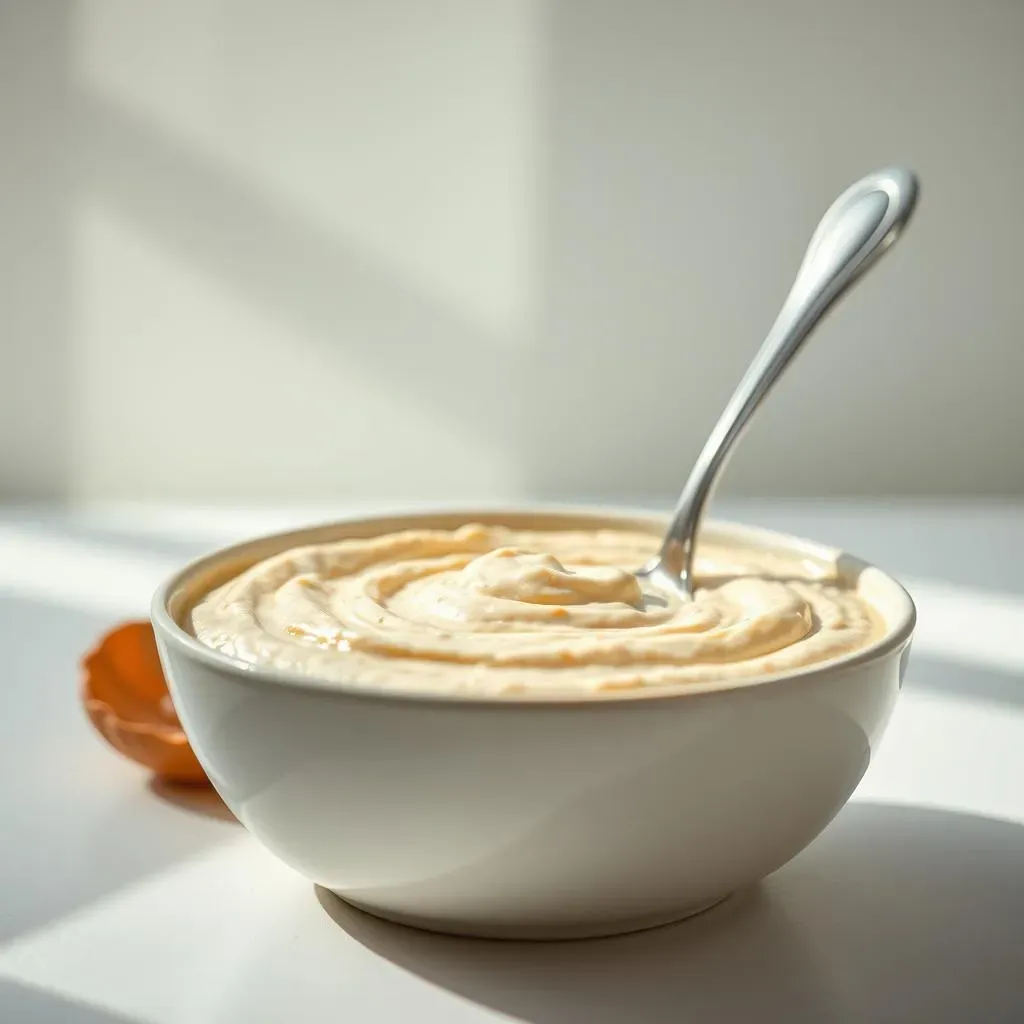
Sour Cream Substitutes in Dips and Dressings
The Tangy Foundation
So, you're looking to whip up a killer dip or a zesty dressing, but you're fresh out of sour cream? I totally get it. Sour cream is like the backbone of so many delicious dips and dressings, giving them that creamy texture and that signature tang. But fear not, my friend! There are plenty of substitutes that can step in and do the job just as well, if not better. It's all about knowing which substitutes bring the right balance of creaminess and tanginess. I’ve had my fair share of dip disasters when I tried to use the wrong swap, so I’ve learned what works and what doesn’t. Let’s explore the best ways to keep your dips and dressings on point, even without sour cream.
Greek Yogurt: The Go-To Swap
When it comes to dips and dressings, Greek yogurt is, hands down, the MVP of sour cream substitutes. It’s got that creamy texture and that lovely tang that you need for a great dip or dressing. Plus, it's healthier than sour cream, with more protein and fewer calories. It’s a win-win! I use it in everything, from my classic ranch dressing to my spicy black bean dip, and it always delivers. The key is to use plain, full-fat Greek yogurt for the best results. The fat content is important for that creamy mouthfeel, and the plain flavor means it won’t clash with other ingredients. I’ve also found that adding a little lemon juice or vinegar to the yogurt can really boost that tangy flavor, making it even closer to sour cream. It’s a simple trick that makes all the difference.
Substitute | Best Use | Notes |
|---|---|---|
Greek Yogurt | Dips, Dressings | Use full-fat, add lemon juice for extra tang |
Cottage Cheese | Dips | Blend until smooth, add lemon juice for tang |
Creamy Alternatives and Blending Tricks
Now, if you're looking for something a bit different, blended cottage cheese can be a surprisingly good option. It might sound weird, but when you blend it until smooth, it becomes incredibly creamy and can work wonders in dips. It doesn’t have the same tang as sour cream, so you’ll definitely need to add some lemon juice or vinegar. I’ve used it in my spinach and artichoke dip, and it was a hit! The secret is to blend it really well, so you don’t have any lumps. I use a food processor for the best results. It's also a great way to sneak in some extra protein! And, if you're going for a vegan option, coconut cream is a lifesaver. Just make sure you chill the can overnight, scoop out the thick cream, and add a bit of lemon juice or apple cider vinegar for that signature tang. It works beautifully in creamy dressings and dips. It’s all about experimenting and finding what works best for your taste buds.